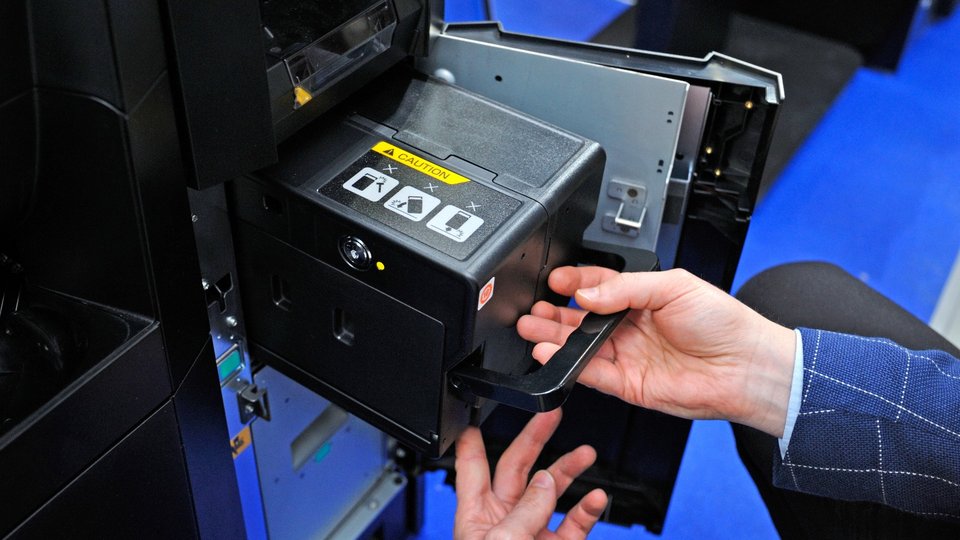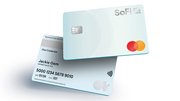Payments
Teller Cash Recyclers 101: 4 facts to know
TCRs have been around for a few decades now at this point, and they have evolved significantly since then. Here are four key facts to know about these machines.

November 5, 2024 by Bradley Cooper — Editor, ATM Marketplace & Food Truck Operator
The phrase "cash is king" is often repeated in the ATM world, but cash is also very difficult to handle. It takes time and effort for banks and businesses to count cash and replenish it. Teller Cash Recyclers (TCRs) are a key tool that banks are adopting to address cash management.
These machines offer a convenient way to count, store and sort cash by denomination. This is a necessary service, as despite the cashless trend, data from YouGov reveals that 67% of customers still use cash for in-store purchases.
TCRs have been around for a few decades now at this point, and they have evolved significantly since then. Here are four key facts to know about these machines.
Modern Teller Cash Recyclers are faster and work better with ATMs
Many older TCRs utilized rolled storage modules, where the cash is rolled into drums in the cassette frame, according to ARCA. However, this is changing, as some teller cash recyclers are embracing purely cassette-based recycler to increase cash capacity and speed of the transaction, according to a story by Colorado Banker.
Scott Fieber, chief strategy officer at Cook Solutions Group said in an email interview that cassettes allow better "interoperability with ATMs and safer transport from the vault to teller row."
In addition, modern TCRs enable self-audit and better note paths for "better uptime and higher capacity," Fieber said.
Ryan Loebs, TCR expert, identified a few other ways that modern TCRs are better than older ones including faster speed.
"Modern TCRs process transaction at much greater speed and have higher capacity, in many cases double and even three times more capacity. These features are needed with cost of labor rising and the number of notes in circulation both up significantly," Loebs said. "Because of many of the above, Modern TCRs typically reach ROI timelines much quicker than older devices."
In addition, TCRs have come down in price according to Loebs. Although the price will vary based on installation and maintenance costs.
Teller Cash Recyclers require investment, strategies
Adoption rates have steadily increased for Teller Cash Recyclers, and Fieber argues, "At this point if you don't have a TCR you are in the minority."
However, whenever a device becomes commonplace, it runs the risk of becoming stagnant. Rather than improving the TCR or looking at new ATM features, banks may purchase the machine and use it for years. This isn't a winning recipe for improving banking experience.
"What the issue seems to be today is the lack of keeping a current strategy around TCR. It is very common that these are black boxes that get forgotten about and there is no clear ownership of the devices internally. From there repeat buying is a growing problem versus seeing what is out there and how new tech can impact efficiencies in the branch. It is not uncommon for FI's to just buy the same unit they initially bought 10-15 years ago and not explore what is out there," Fieber said.
However, this raises a key question — should banks invest with the trend towards cashless?
What about cash?
The number of customers joining the cashless economy has increased over the years. For one, according to data from Clearly Payments, many businesses in the U.S. don't accept cash, although many of these cashless businesses have been banned in localities.
Currently, data suggests that cash represents 16% of all transactions. With that in mind, why should banks adopt Teller Cash Recyclers, especially with some banks adopting cashless branches?
Fieber said that at the ATM level, cash still remains strong.
"What has changed is the number of transactions is dropping but the amount of cash being withdrawn is higher. Essentially people are grabbing larger amounts of cash and just doing is less frequently," he said.
Loebs agreed, adding: "The $100 banknote is more involved in transactions than ever before."
As a result, the need for newer TCRs is stronger, since it can both handle larger withdrawals and deposits.
Loebs said in particular that there needs to be "a renewed focus on $100 storage, something that previous generations struggle with because of capacity restraints."
How do Teller Cash Recyclers help the customer?
All this information is key, but one critical question remains — how do Teller Cash Recyclers actually help the modern bank experience?
The first and most important element is that TCRs are fast, and customers want fast service when they are at the branch or business.
Fieber said with TCRs there is "no need to pull cash out of the drawer count it to themselves, then count it to the customer, and no need to have a centralized vault in the branch where the tellers have to physically buy and sell the cash each night."
There's also a hidden element here: automating simpler transactions so banks can focus on developing personal relationships. Banks are increasingly renovating old branches or opening new ones that remove traditional teller lines in favor of more open spaces with bankers that can deliver financial advice and guidance, rather than mere transactions.
For example, Bank of Americahas been on a branch transformation journey with plans to add more than 165 branches by the end of 2026 that primarily focus on meeting places for customers to discuss finances or access ATMs.
"Most banks say they want to maintain meaningful human interactions in the branch. Cash transaction efficiency is critical to enable these high value interactions," Loebs said.
Conclusion
Teller Cash Recyclers are just one part of how banks can optimize their branches to become more efficient spaces that meet customer needs. They should fit in the overall omnichannel strategy of ATMs, banking AI and more to craft a better bank customer experience strategy.
About Bradley Cooper
Included In This Story
Cook Solutions Group
Simple | Secure | Service | Solutions. From ATM sales, support, and service to enterprise security solutions with Next Generation technology. Think CSG First. We Make it Happen!













